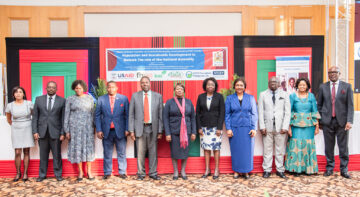News

For Immediate Release
For more information, contact: Dr. Bernard Onyango at bernard.onyango@afidep.org
The findings of a new study that casts light on how Uganda and other East African countries can utilise the potential of their growing youth population to propel economic growth will be launched on Friday, 13 July 2018 at the Imperial Royale Hotel in Kampala. The report, entitled the East African Regional Analysis of Youth Demographics, has been produced by the African Institute for Development Policy (AFIDEP) in partnership with the University of Southampton. AFIDEP, the Uganda National Population Council (NPC) and the UK’s Department for International Development (DFID), will launch the findings at a forum that will be attended by top government officials and development stakeholders.
The report, focusing on four East African countries Kenya, Rwanda, Tanzania and Uganda, notes that Uganda’s population is projected to grow from 40 million in 2015 to 141 million by 2065, due to persistently high fertility rates. The 15-34 years age group (the official definition of youth according to the National Youth Policy, 2016) is expected to increase from 22.7 million in 2015 to 48 million by 2065, which translates to 34.1% of the population.
The youth population currently presents a huge dependency burden to both households and the state, currently and in the future, negatively impacting economic growth. The youth population can be disillusioned and become agents of social unrest, crime, and violent extremism. High dependency burden can also lead to perennial poverty characterised by low living standards for the citizenry. However, this large youth population, if properly cultivated through access to quality education, health, jobs or opportunities to earn decent livelihoods, can catapult Uganda into an economic boom known as a demographic dividend.
Uganda’s long-term development blueprint, Vision 2040, aims at graduating Uganda from a low-income country to an upper-middle-income status. The study looked at the priority areas that the country needs to consider to realise Vision 2040. To harness the dividend, the country must deal with the rapidly growing youth population with astuteness.
To estimate the economic growth that Uganda can achieve, the DemDiv Modelling Tool was used over a forty-year period under various scenarios. The results suggest that economic growth would be highest with an integrated investment framework where investments are made in family planning, economic competitiveness and education. This would result in a GDP per capita of USD 9,567 by 2040, up from USD 506 in 2011. At this level, Uganda would move up into the upper-middle-income category, achieving the socio-economic transformation envisioned in the Vision 2040.
To harness the youth population the country should facilitate a rapid decline in average number of births per woman through universal access to contraceptives, longer periods in school, and girls and women empowerment. Quality education and skills development, and the creation of job or entrepreneurship opportunities is also crucial to enable the youth to make a decent living and be constructive contributors to the society.
The report is a product of a research project funded by UK’s DFID through the Research for Evidence Division (RED) for the benefit of developing countries. The project was developed in partnership with UK’s DFID, the East Africa Research Fund (EARF), the University of Southampton and AFIDEP.
Read the full report here.
===End===
Related Posts





